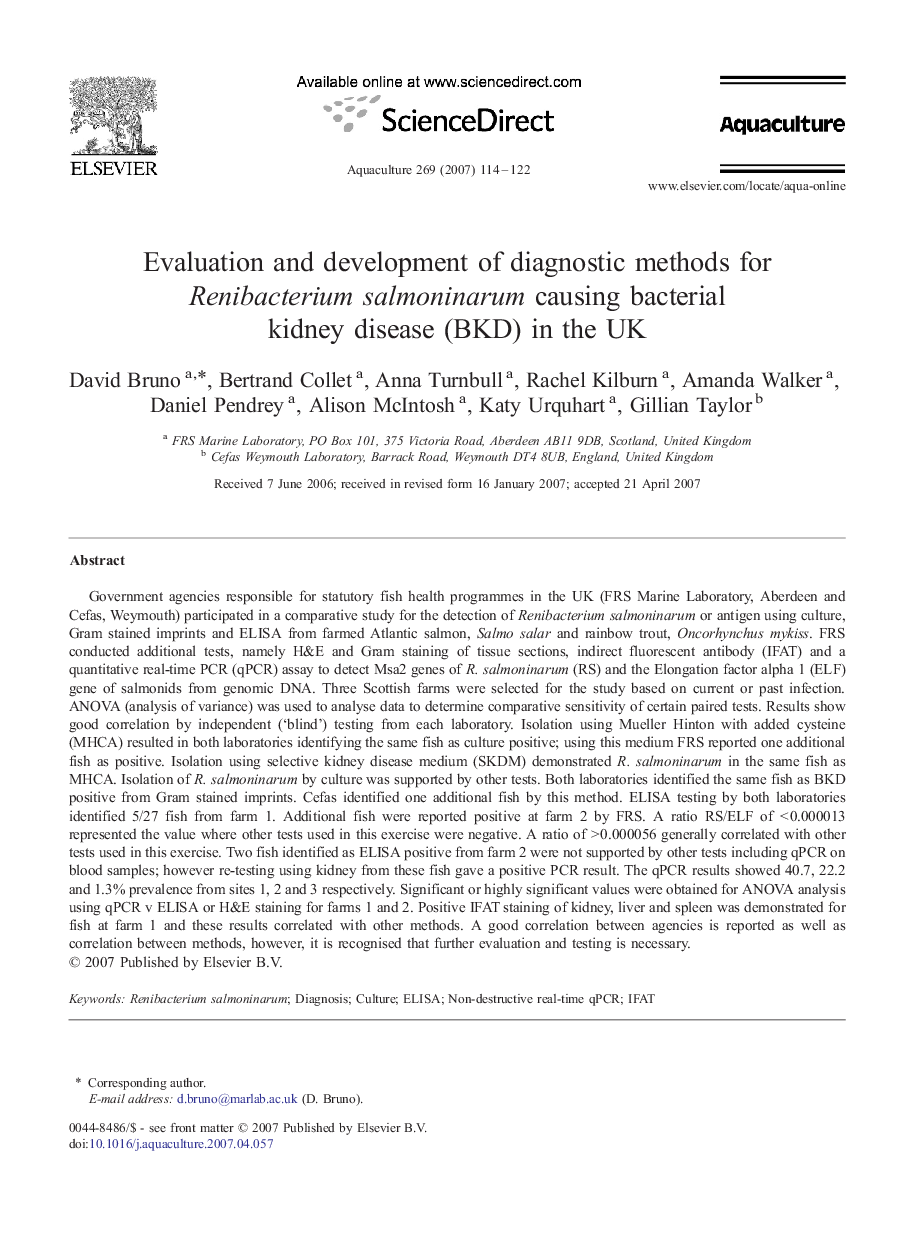| کد مقاله | کد نشریه | سال انتشار | مقاله انگلیسی | نسخه تمام متن |
|---|---|---|---|---|
| 2425267 | 1552973 | 2007 | 9 صفحه PDF | دانلود رایگان |

Government agencies responsible for statutory fish health programmes in the UK (FRS Marine Laboratory, Aberdeen and Cefas, Weymouth) participated in a comparative study for the detection of Renibacterium salmoninarum or antigen using culture, Gram stained imprints and ELISA from farmed Atlantic salmon, Salmo salar and rainbow trout, Oncorhynchus mykiss. FRS conducted additional tests, namely H&E and Gram staining of tissue sections, indirect fluorescent antibody (IFAT) and a quantitative real-time PCR (qPCR) assay to detect Msa2 genes of R. salmoninarum (RS) and the Elongation factor alpha 1 (ELF) gene of salmonids from genomic DNA. Three Scottish farms were selected for the study based on current or past infection. ANOVA (analysis of variance) was used to analyse data to determine comparative sensitivity of certain paired tests. Results show good correlation by independent (‘blind’) testing from each laboratory. Isolation using Mueller Hinton with added cysteine (MHCA) resulted in both laboratories identifying the same fish as culture positive; using this medium FRS reported one additional fish as positive. Isolation using selective kidney disease medium (SKDM) demonstrated R. salmoninarum in the same fish as MHCA. Isolation of R. salmoninarum by culture was supported by other tests. Both laboratories identified the same fish as BKD positive from Gram stained imprints. Cefas identified one additional fish by this method. ELISA testing by both laboratories identified 5/27 fish from farm 1. Additional fish were reported positive at farm 2 by FRS. A ratio RS/ELF of < 0.000013 represented the value where other tests used in this exercise were negative. A ratio of > 0.000056 generally correlated with other tests used in this exercise. Two fish identified as ELISA positive from farm 2 were not supported by other tests including qPCR on blood samples; however re-testing using kidney from these fish gave a positive PCR result. The qPCR results showed 40.7, 22.2 and 1.3% prevalence from sites 1, 2 and 3 respectively. Significant or highly significant values were obtained for ANOVA analysis using qPCR v ELISA or H&E staining for farms 1 and 2. Positive IFAT staining of kidney, liver and spleen was demonstrated for fish at farm 1 and these results correlated with other methods. A good correlation between agencies is reported as well as correlation between methods, however, it is recognised that further evaluation and testing is necessary.
Journal: Aquaculture - Volume 269, Issues 1–4, 14 September 2007, Pages 114–122